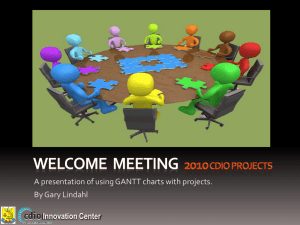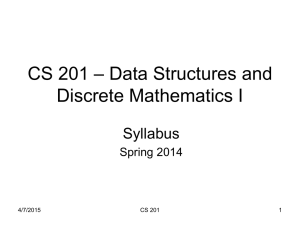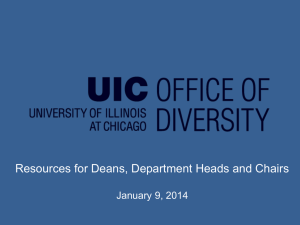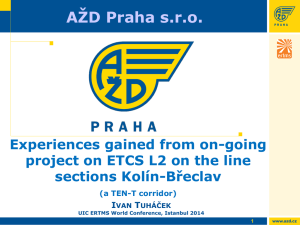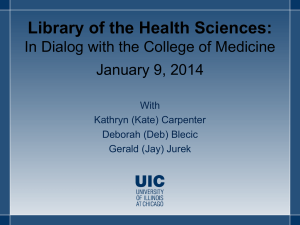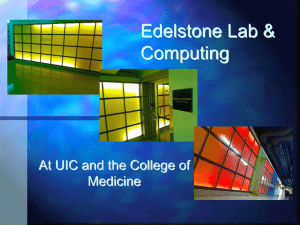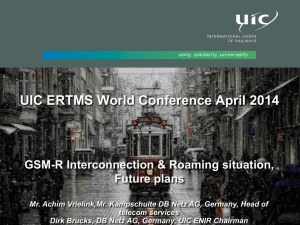Robert SARFATI Operators - UIC ERTMS World Conference 2014
advertisement
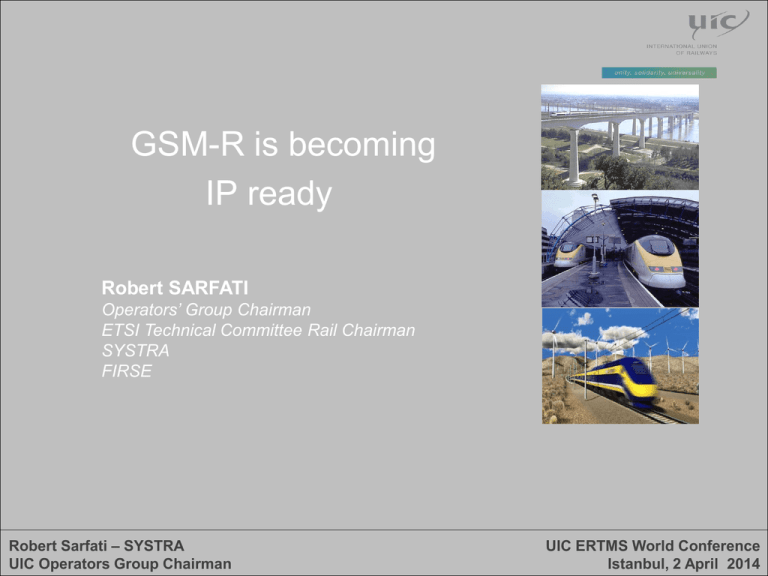
GSM-R is becoming IP ready Robert SARFATI Operators’ Group Chairman ETSI Technical Committee Rail Chairman SYSTRA FIRSE Robert Sarfati – SYSTRA UIC Operators Group Chairman UIC ERTMS World Conference Istanbul, 2 April 2014 Background: GSM-R an European choice In Europe, existing standard technologies were considered for the new digital radio technology, The choice of GSM was finalized in 1995. GSM-R standards were developed based on GSM R99 technology and included all railways specific requirements and an allowance of a specific additional frequency range Enhanced Location Dependent Addressing (eLDA) Enhanced Railway Emergency Call (eREC) Short Message Service to Functional Number Functional Numbering Location Dependent Addressing High speed – up to 500 km/h Voice Group Call Service (VGCS) Voice Broadcast Service (VBS) Enhanced Multi Level Precedence and Preemption (eMLPP) All functionalities available for GSM-R including General Packet Radio Service (GPRS) Enhanced Data Rates for GSM Evolution Robert Sarfati – SYSTRA UIC Operators Group Chairman l Applications Railway functional Requirements (EIRENE) GSM enhancements for railways ( ETSI EN301515) ) Standard GSM functionality UIC ERTMS World Conference Istanbul, 2 April 2014 Functionalities ensured by GSM-R GSM-R is a worldwide standard, developed within the frame of the GSM ETSI standards to include Rail & Transport needs. - It includes a dedicated radio spectrum for exclusive rail use, all over Europe. - It is the bearer for ETCS and Track-to-Train radio . - It allows for evolution towards Packet Switching GPRS/EGPRS - It includes features specific for Railways operations . - It includes a dedicated European Frequency Band (876-880 / 921925 MHz) with extension possible within (873-915 / 918-960 MHz) and other GSM frequency bands* such as the 1800 MHz for worldwide application. * As listed in ETSI TS 100 910 Robert Sarfati – SYSTRA UIC Operators Group Chairman UIC ERTMS World Conference Istanbul, 2 April 2014 Standardization: a continuous process GSM Rel '99 Phase 2 1992 GPRS EGPRS 1997 2000 3GPP/UMTS/LTE Rel-4 2001 2002 Rel-N Rel-12 2013 Rel '99: Release 1999 Robert Sarfati – SYSTRA UIC Operators Group Chairman UIC ERTMS World Conference Istanbul, 2 April 2014 GSM-R current status Robert Sarfati – SYSTRA 5 Operators Group Chairman UIC UIC ERTMS World Conference Istanbul, 2 April 2014 From an European standard In most of the European Countries GSM-R is in operation and ETCS L2 roll out is relying on GSM-R: 70,000 km of track are in GSM-R operation just in Europe and 84,000 km more are planned to be covered in addition.*) *) source: UIC e-News 311 Robert Sarfati – SYSTRA UIC Operators Group Chairman UIC ERTMS World Conference Istanbul, 2 April 2014 To a worldwide standard GSM-R is expanding worldwide: 138,000 km are planned to be covered outside Europe. * With Contracts awarded** in: India Turkey Saudi//UAE/Qatar/Oman Algeria/Libya/Morocco/Tunisia South Africa Australia China Russia/Turkmenistan * Source: Kapsch CarrierCom, Nokia Siemens Networks - GSM-R in operation ** Source UIC and GSM-R IG Robert Sarfati – SYSTRA UIC Operators Group Chairman UIC ERTMS World Conference Istanbul, 2 April 2014 GSM-R phased evolution Robert Sarfati – SYSTRA 8 Operators Group Chairman UIC UIC ERTMS World Conference Istanbul, 2 April 2014 From the European Legislation perspective MoU ERTMS– A Memorandum of Understanding ERTMS was signed between the European Commission, European Railway Agency and the Rail Sector Organisations : The Parties note the commitment of the GSM-R Industry Group members to the long-term support of GSM-R technology, at least until 2025. Nevertheless telecommunications systems usually have a much shorter life cycle than signalling systems. For this reason, it should be possible to replace the 'telecommunications part of onboard equipment without this having an impact on the 'safety critical signalling path. Today ETCS applications work with GSM-R circuitswitched services. It does seem possible, however, to use packet-switch systems (e.g. GPRS) and, in the longer term, other IP-based standards, without impacting on the ETCS specifications. Robert Sarfati – SYSTRA 9 Operators Group Chairman UIC UIC ERTMS World Conference Istanbul, 2 April 2014 From the European Mandates perspective Two Mandates were notified and endorsed by CEN/CENELEC and ETSI. Mandate M/483 – Mandate for programming and standardization addressed to the European Standardization Organizations under Directive 2008/57/EC in the field of the interoperability of the rail system within the European Union. Mandate M/486 – Mandate for programming and standardization addressed to the European Standardization Bodies in the field of urban rail. Robert Sarfati – SYSTRA 10 UIC Operators Group Chairman UIC ERTMS World Conference Istanbul, 2 April 2014 Critically for Railway Operations Step 1: Needs analysis Narrow Band & Mission Critical Applications Red – Railway Network supported applications Train Radio Blue – Potential Parallel networks supported applications ETCS Operation and Maintenance Teams Train Maintenance crew applications Broadband Driver Look Ahead CCTV Real time passenger video information Mail, WEB for passengers Bandwidth Robert Sarfati – SYSTRA UIC Operators Group Chairman UIC ERTMS World Conference Istanbul, 2 April 2014 Step 2: NSS and FTS Migration ETSI TS 103 147 V1.1.1 (2013-06) Technical Specification ETSI TS 103 066 V1.1.2 (2012-04) Technical Specification Foreign Network Railway Telecommunications (RT); Rel-4 Core Network requirements for GSM-R Railway Telecommunications (RT); GSM-R Core Network Redundancy From R99 To R4 BICN FTS ETSI TS 103 389 V1.1.1 (2011-09) NSS: From R99 to BICN R4 Core Network architecture and PS Roaming Exchange NSS to FTS: SIP introduction at Interface, VRS with IP interface. Transmission network IP Guideline IP QoS GPRS/EGPRS for ETCS Robert Sarfati – SYSTRA UIC Operators Group Chairman Technical Specification BSS Railway Telecommunications (RT); Global System for Mobile communications (GSM); Usage of Session Initiation Protocol (SIP) on the Network Switching Subsystem (NSS) to Fixed Terminal Subsystem (FTS) interface for GSM Operation on Railways Growing, improved applications BSC BTS BICN: Bearer Independent Core Network PS : Packet Switching IP: Internet Protocol QoS: Quality of Service SIP: Session Initiation Protocol UIC ERTMS World Conference Istanbul, 2 April 2014 Step 3: BSS & Terminals Migration Foreign Network NSS: From R4 to R4+ Core Network architecture and features NSS to FTS: SIP phase 2 introduction at Interface Transmission network : IP introduction within distribution network IP BSS: “Full IP end to end interface over the Abis interface of BSS” Terminals Software Defined Radio VoIP over the Air interface Robert Sarfati – SYSTRA UIC Operators Group Chairman From R99 To R4+ features FTS BSS BSC BTS IP: Internet Protocol FTS: Fixed Terminal System SIP: Session Initiation Protocol VOIP: Voice Over IP NSS: Network Subsystem BSS: Bas Station Subsystem UIC ERTMS World Conference Istanbul, 2 April 2014 Conclusion The analysis showed that communication technology evolution is not complete, but the IP based technology is the only stable platform. The worldwide evolution shows that GSM/UMTS is still a long term technology for voice and preserves more than 80% of railways assets while evolving toward IP. The roadmap should be « railways needs evolution » based, not « technology only » driven. It shall, if possible, address “all transport” needs, and if feasible worldwide through a 3GPP type organization. GSMR-IP is Global, allows from the Shelves delivery, ensures Multi-supplier environment, is Reliable, prepared for Innovation and answers Promises. Robert Sarfati – SYSTRA UIC Operators Group Chairman UIC ERTMS World Conference Istanbul, 2 April 2014 rsarfati@systra.com www.systra.com UIC ERTMS/GSM-R Operator’s Group Chairman European Telecommunications Standard Institute Rail Telecoms Chairman THANK YOU Robert Sarfati – SYSTRA UIC Operators Group Chairman UIC ERTMS World Conference Istanbul, 2 April 2014
